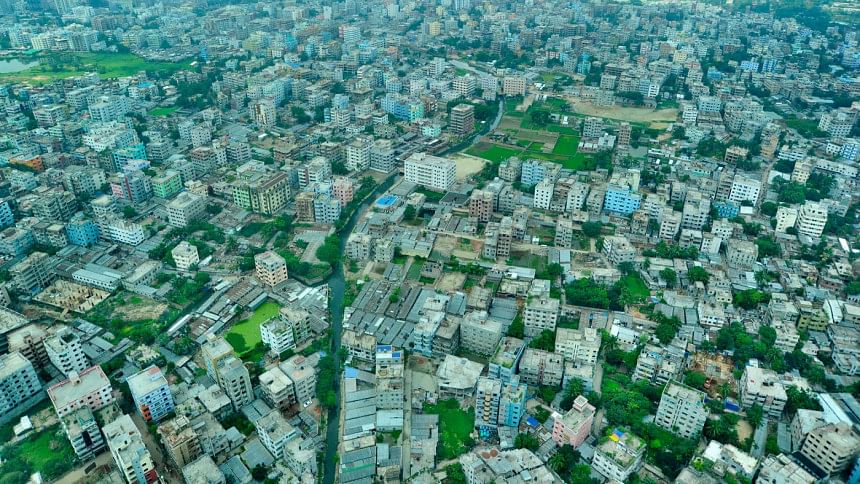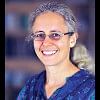Dhaka, Density and Liveability

Growing up in a small city in the southwest United States, I thought I didn't like cities. I loved hiking in the nearby mountains, from the top of which a grey haze hung over the city, which itself offered a few charms. Since we had no industry or brick kilns, I can only assume that the pollution was caused by the car traffic. The city planners seemed to have invested more energy in ensuring that people could move around easily, than to ensure that there were destinations worth reaching. Despite having beautiful weather most of the year—my family ate outside on our veranda about half of the year—there weren't outdoor places where people gathered. Our local parks were sad, bedraggled affairs. Bored youth drove to restaurants or shopping malls to hang out.
Then I had the good fortune of travelling across the country to attend university near Boston. Now, Boston isn't one of our greater cities. It is racist, segregating the dark-skinned in dirty and dangerous neighbourhoods. Winters are miserable. But it is a city. I could walk for hours, exploring different neighbourhoods. There was—is—a lengthy bike and walking path along the Charles River, where people can stroll and cycle, safe from traffic. For free evening entertainment, there were plazas where I could watch street performers and passers-by. There was also functional public transit—it was slow and noisy, but it came regularly and it was easy to understand how to use it. As a result, when I didn't feel like walking for hours, I could still explore the city.
In later years, I started informally studying urban planning and came to realise that the beauty of cities is that they bring many opportunities for exchange into a small area. The higher density of urban areas means that one can meet and mingle with a greater variety of people, exposed to different ideas, cultures, and ways of being than one can find in the countryside. Cities can be polluted, but they don't need to be—at least not to the level that many are. This is a discovery that many have made only because of Covid-19 shutdowns.
When I first moved to Dhaka, the sheer size of the city was overwhelming, but I came to realise that you don't live in a megacity—you live in a neighbourhood. And I find mine enchanting, with so many people walking about, people selling goods from bicycle carts, children moving about on their own, people interacting freely. Entertainment is freely available, watching the people. It is the opposite of the lonely and isolating cities that are all too common in my home country.
Having just observed World Cities Day on October 31, it is worth reflecting on what aspects of our city we enjoy and what aspects we would like to change. Rather than reflexively blaming migrants for Dhaka's overcrowded state, or rickshaws for its traffic jams, or whatever the culprit of the day is for its pollution, it is worth reflecting on what the city is and what it could be.
In the past, during hartals, I marvelled at the sight of four or five children riding bicycles side by side, teens playing cricket on quiet streets, and the ability to travel faster by rickshaw than most days when I could travel by car.
During Covid shutdowns, we once again saw a different, quieter, friendlier, less polluted version of Dhaka.
Sure, Dhaka is overcrowded, but how much space does a migrant take, versus a private car?
Yes, rickshaws can be annoying—especially when I'm on a bicycle—but what VIP road is free of congestion?
Winter dust and fires, and brick kilns, do contribute to pollution, but so does the overwhelming presence of motorised vehicles.
Dhaka turns out to be not that big, as you can discover if you try cycling it early in the morning or on a holiday. Many destinations would be easily reachable by bicycle if we built the proper infrastructure to make cycling safe and convenient. If we focused on enabling people to move easily within their neighbourhoods and discouraged car trips, we could make the city much more liveable immediately in terms of congestion, pollution, noise, and safety. If we stopped supplying so much space to cars, we would have a lot more space available to people—more space for parks and playgrounds, to plant trees and restore canals, all of which would also reduce the heat island effect and help offset the worsening flooding due to the climate crisis. What is true for Dhaka is also true for our divisional cities, which otherwise risk becoming the same noisy polluted congested mess.
As a wise man once said, "Liveability is density done right." With so many fascinating people within such easy reach, our city could become a great place to wander and inhabit. Then, instead of consistently ranking as one of the world's least liveable cities, Dhaka could prove far more rewarding to its many inhabitants.
Debra Efroymson is the executive director of the Institute of Wellbeing, Bangladesh, and author of "Beyond Apologies: Defining and Achieving an Economics of Wellbeing."

 For all latest news, follow The Daily Star's Google News channel.
For all latest news, follow The Daily Star's Google News channel. 



Comments